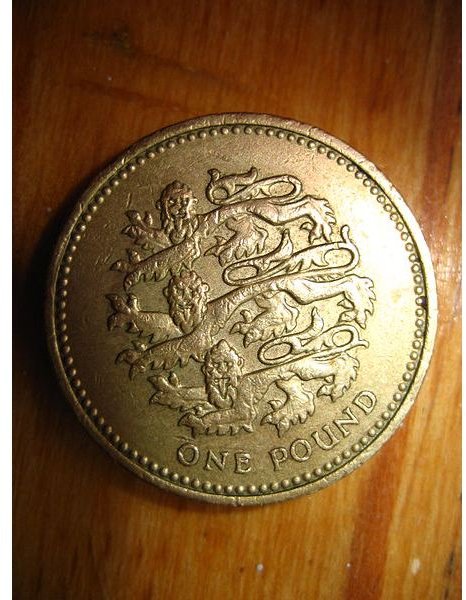Currency Exchange Rate Trends (2006-2011): US Dollar Versus Major Currencies
Understanding Currency Exchange Rates
Investors, consumers and businesses are all impacted by changes in currency exchange rate trends. Changes in the currency exchange rates can make foreign travel easier but they can also make life more difficult for a country’s exporters. As the world continues to become more and more connected, understanding currency rate exchange trends becomes ever more important. The world has over one hundred different currencies, most of which are traded in large volumes every day in the forex market, but this article will focus on some of the most important foreign currencies: the U.S. dollar, the Euro, the British Pound and the Japanese Yen.
For ease of reference, the foreign currencies will be compared against the U.S. dollar. The time period covered in this article is January 10, 2006 to January 10, 2011. The source of data for this article comes from the Historical Exchange rate tool provided by the OANDA Corporation using the Interbank rate.
The U.S. Dollar and the Euro Exchange Rate Trends (2006-2011)

Launched at the end of the 20th century, the Euro is currently used as the official currency of 17 countries in Europe including France, Germany, Italy and Ireland. In 2010 and 2011, questions were raised about the Euro’s long term future but many commentators argue that abandoning the currency would be extremely damaging to member countries so it is expected to endure for the foreseeable future.
- On January 10, 2006: 0.82580 Euros were equal to 1 U.S. Dollar
- On January 10, 2007: 0.76780 Euros were equal to 1 U.S. Dollar
- On January 10, 2008: 0.68030 Euros were equal to 1 U.S. Dollar
- On January 10, 2009: 0.73420 Euros were equal to 1 U.S. Dollar
- On January 10, 2010: 0.69420 Euros were equal to 1 U.S. Dollar
- On January 10, 2011: 0.77510 Euros were equal to 1 U.S. Dollar
The U.S. Dollar and the British Pound Exchange Rate Trends (2006-2011)

The United Kingdom is home to one of the world’s largest economies and a financial center that is second only to New York City in importance, London. Historically, one British pound has cost more than one US dollar but the rate constantly changes due to a variety of factors including confidence in the British government and interest rates set by the Bank of England.
- On January 10, 2006: 0.56570 British pounds were equal to 1 US Dollar
- On January 10, 2007: 0.51520 British pounds were equal to 1 U.S. Dollar
- On January 10, 2008: 0.50840 British pounds were equal to 1 U.S. Dollar
- On January 10, 2009: 0.65760 British pounds were equal to 1 U.S. Dollar
- On January 10, 2010: 0.62430 British pounds were equal to 1 U.S. Dollar
- On January 10, 2011: 0.64350 British pounds were equal to 1 U.S. Dollar
The U.S. Dollar and the Japanese Yen Exchange Rate Trends (2006-2011)
The Japanese Yen is the currency of one of the world’s largest economies and it is regularly used to measure the value of the American dollar. As Japan’s population continues to age and China’s economy grows, the economic importance of the yen may change but for the time being, it remains an important foreign currency.
- On January 10, 2006: 114.2330 Japanese Yen were equal to 1 U.S. Dollar
- On January 10, 2007: 119.0590 Japanese Yen were equal to 1 U.S. Dollar
- On January 10, 2008: 109.2830 Japanese Yen were equal to 1 U.S. Dollar
- On January 10, 2009: 90.93880 Japanese Yen were equal to 1 U.S. Dollar
- On January 10, 2010: 92.71430 Japanese Yen were equal to 1 U.S. Dollar
- On January 10, 2011: 83.22460 Japanese Yen were equal to 1 U.S. Dollar
Conclusion
This introduction to currency exchange rate trends is only the tip of the iceberg. Economists and traders who work in the forex market study many other trends to predict and understand the movement of currencies. For example, some currencies such as the Canadian dollar are strongly influenced by the price of oil and other commodities. Decisions and policies by central banks, such as the Federal Reserve in the United States, also tend to have a major impact on currency exchange rate trends.
References
The references listed below provide a wealth of information about currency exchange rate trends, monetary policy and data on how foreign exchange rates change over time. Every time you buy a product or service made in a different county or travel abroad, your life is impacted by the value of foreign currencies.
- Image Credit: 1 Euro Coin (Italy), https://commons.wikimedia.org/wiki/File:1_euro_Italy.jpg
- Image Credit: 1 British Pound Coin, https://commons.wikimedia.org/wiki/File:New_Camera.jpg?uselang=en-gb
- Bank of England, https://www.bankofengland.co.uk/
- Currency Tools, https://www.oanda.com/currency/
- European Central Bank, https://www.ecb.int/
- Bank of Japan, https://www.boj.or.jp/en/